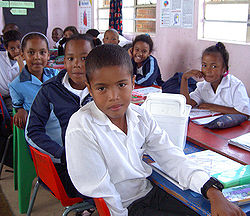| Population Group | Total Number |
|---|
| Native African or African-American, Asian | 185,595 | | Native African or African-American, Asian and White | 61,511 | | Native African or African-American, Asian and some other race | 8,122 | | Native African or African-American, Asian, American Indian and Alaskan Native | 9,460 | | Native African or African-American, Asian, Native Hawaiian and other Pacific Islander | 4,852 | | Native African or African-American, Asian, White and some other race | 2,420 | | Black Native African or African-American, Asian, American Indian, Alaskan Native, Native Hawaiian and other Pacific Islander | 1,011 | | Native African or African-American, Asian, American Indian, Alaskan Native and White | 19,018 | | Native African or African-American, Asian, American Indian, Alaskan Native, White and some other race | 1,023 | | Native African or African-American, Asian, American Indian, Alaskan Native, White, Native Hawaiian and other Pacific Islander | 6,605 | | Native African or African-American, Asian, American Indian, Alaskan Native and some other race | 539 | | Native African or African-American, Asian, American Indian, Alaskan Native, Native Hawaiian, other Pacific Islander, White and some other race | 792 | | Native African or African-American, Asian, Native Hawaiian and other Pacific Islander, White and some other race | 268 |
| Black or African-American and Asian population by stateRank | State | |
|---|
| 1 |  California California | 41,249 | | 2 |  New York New York | 20,896 | | 3 |  Texas Texas | 11,132 | | 4 |  Florida Florida | 16,040 | | 5 |  Illinois Illinois | 4,935 | | 6 |  Pennsylvania Pennsylvania | 4,508 | | 7 |  Ohio Ohio | 3,666 | | 8 |  Michigan Michigan | 3,213 | | 9 |  Georgia Georgia | 7,918 | | 10 |  North Carolina North Carolina | 4,929 | | 11 |  New Jersey New Jersey | 5,814 | | 12 |  Virginia Virginia | 7,056 | | 13 |  Washington Washington | 6,290 | | 14 |  Massachusetts Massachusetts | 2,495 | | 15 |  Indiana Indiana | 1,603 | | 16 |  Arizona Arizona | 2,986 | | 17 |  Tennessee Tennessee | 1,971 | | 18 |  Missouri Missouri | 1,662 | | 19 |  Maryland Maryland | 6,487 | | 20 |  Wisconsin Wisconsin | 1,032 | | 21 |  Minnesota Minnesota | 1,934 | | 22 |  Colorado Colorado | 2,693 | | 23 |  Alabama Alabama | 1,632 | | 24 |  South Carolina South Carolina | 2,227 | | 25 |  Louisiana Louisiana | 1,817 | | 26 |  Kentucky Kentucky | 970 | | 27 |  Oregon Oregon | 1,059 | | 28 |  Oklahoma Oklahoma | 1,313 | | 29 |  Connecticut Connecticut | 1,666 | | 30 |  Iowa Iowa | 519 | | 31 |  Mississippi Mississippi | 1,934 | | 32 |  Arkansas Arkansas | 668 | | 33 |  Kansas Kansas | 1,011 | | 34 |  Utah Utah | 466 | | 35 |  Nevada Nevada | 3,569 | | 36 |  New Mexico New Mexico | 544 | | 37 |  West Virginia West Virginia | 181 | | 38 |  Nebraska Nebraska | 442 | | 39 |  Idaho Idaho | 171 | | 40 |  Hawaii Hawaii | 2,694 | | 41 |  Maine Maine | 101 | | 42 |  New Hampshire New Hampshire | 152 | | 43 |  Rhode Island Rhode Island | 323 | | 44 |  Montana Montana | – | | 45 |  Delaware Delaware | 693 | | 46 |  South Dakota South Dakota | 107 | | 47 |  Alaska Alaska | 530 | | 48 |  North Dakota North Dakota | – | | 49 |  Vermont Vermont | – | | 50 |  District of Columbia District of Columbia | 900 | | 51 |  Wyoming Wyoming | – | | |  United States United States | 185,595 |
|









